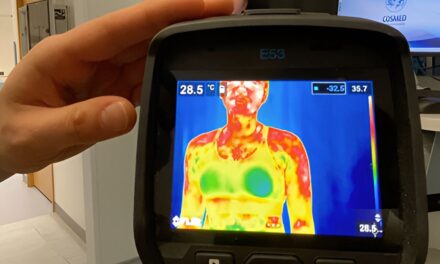Researchers from the NIHR Moorfields Biomedical Research Centre and University College London have made a groundbreaking advancement in the treatment of AIPL1-associated severe retinal dystrophy through gene therapy. In a first-of-its-kind human trial, scientists demonstrated that gene supplementation therapy could significantly improve visual acuity and preserve retinal structure in young children.
AIPL1-associated retinal dystrophy is a rare genetic condition caused by biallelic variants in the AIPL1 gene, leading to severe visual impairment from birth. The disease is characterized by progressive photoreceptor degeneration, leaving affected individuals with limited treatment options. Previous studies using Aipl1-deficient mouse models and human retinal organoids indicated that early intervention with gene therapy could restore partial photoreceptor function, reinforcing the importance of treating the condition during early childhood.
The Study and Its Findings
The study, titled “Gene therapy in children with AIPL1-associated severe retinal dystrophy: an open-label, first-in-human interventional study”, was published in The Lancet. Researchers administered a single subretinal injection of a recombinant adeno-associated viral vector (rAAV8.hRKp.AIPL1) carrying the AIPL1 gene into one eye of each child. The therapy was designed to supplement the missing AIPL1 gene using a human rhodopsin kinase promoter, ensuring targeted gene expression in photoreceptor cells. Oral prednisolone was given perioperatively to control inflammation.
Four children between the ages of 1.0 to 2.8 years with confirmed AIPL1 mutations participated in the study. Before treatment, their visual acuity was limited to light perception. Over a mean follow-up period of 3.5 years, treated eyes showed a significant improvement in visual acuity, with a mean gain to 0.9 logMAR (range 0.8–1.0) from a baseline equivalent of 2.7 logMAR.
In contrast, untreated eyes did not exhibit any improvement and, in some cases, deteriorated further to an unmeasurable level or complete loss of light perception. Advanced objective testing, including the PopCSF touchscreen assay and steady-state visually evoked potentials (ssVEPs), confirmed improved visual function and cortical responses in treated eyes. Retinal imaging also showed better-preserved thickness and lamination in three of the four treated eyes compared to their untreated counterparts.
Implications and Future Prospects
The results of this study highlight the potential of gene therapy as a viable treatment option for early-onset severe retinal dystrophies. The sustained visual improvements observed in the children, coupled with the absence of serious adverse effects, underscore the importance of early intervention to maximize therapeutic outcomes.
While this trial marks a significant milestone in ophthalmic gene therapy, further studies with larger cohorts and long-term monitoring are necessary to validate the findings and refine the approach. Nevertheless, this pioneering research paves the way for future genetic interventions aimed at preserving and restoring vision in individuals affected by inherited retinal diseases.
Disclaimer
This article is for informational purposes only and should not be considered medical advice. The findings discussed are based on an early-stage clinical trial, and additional research is required before gene therapy becomes widely available. Patients and caregivers should consult with healthcare professionals for personalized medical guidance.












